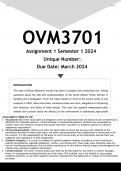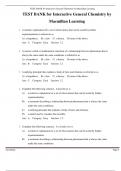College aantekeningen
Lectures and additional information Nutrition & Infectious Disease
This document contains all lectures and supplementary information of the course Nutrition & Infectious Diseases. The additional literature can be found at the end of each lecture. The discussions have been included and the lectures have been worked out in full.
[Meer zien]













